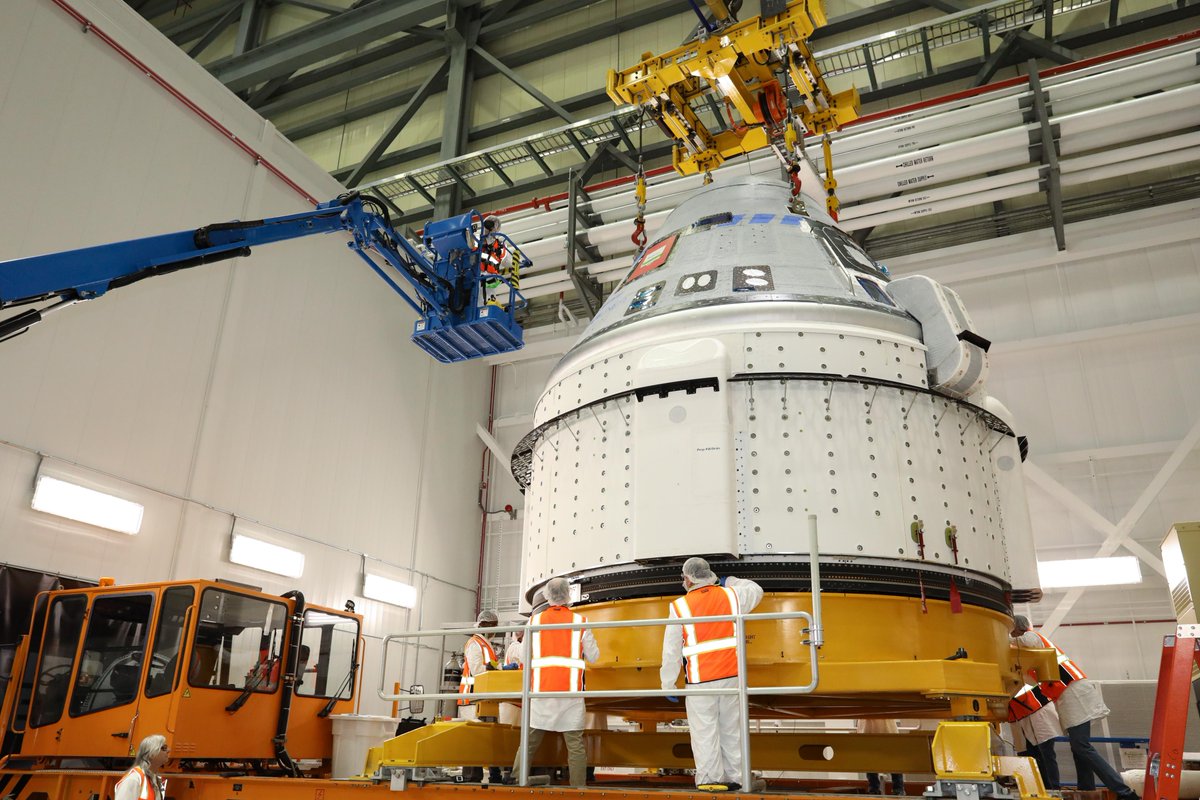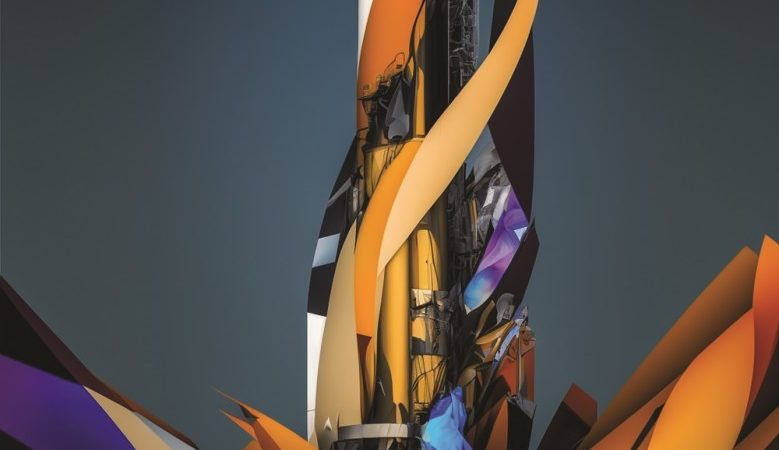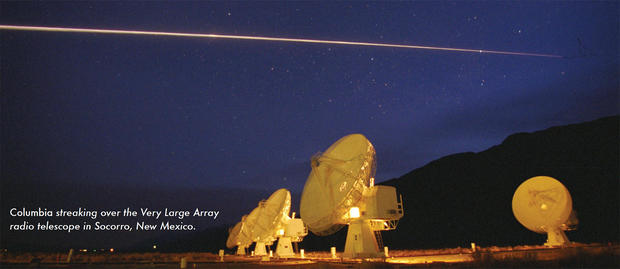Boeing’s first space-ready Starliner crew capsule meets its Atlas 5 launcher – Spaceflight Now
EDITOR’S NOTE: Updated at 1:30 p.m. with confirmation of lift and mate inside the Vertical Integration Facility.

Boeing’s first Starliner crew capsule to fly in space departed its factory Thursday at the Kennedy Space Center in Florida for a trip to a launch pad a few miles away, where teams raised the craft atop an Atlas 5 rocket for liftoff next month on an unpiloted test flight to the International Space Station.
The Starliner spacecraft is being readied for liftoff no earlier than Dec. 17 from Cape Canaveral on a week-long unpiloted demonstration flight to the International Space Station, a crucial precursor before the first crewed Starliner mission next year.
Fresh out of a fueling cell inside a former space shuttle hangar at Kennedy, the Starliner spacecraft rolled out of its manufacturing facility around 6 a.m. EST (1100 GMT) Thursday on a slow-speed transporter for a road trip to pad 41 at nearby Cape Canaveral Air Force Station.
The transporter paused outside the Starliner manufacturing building for a brief ceremony. Boeing and NASA officials, along with the astronauts assigned to fly the Boeing-built ship’s second space mission next year, celebrated the occasion with employees gathered outside Kennedy’s iconic Vehicle Assembly Building.
After a road trip around the VAB and eastward along a road paralleling NASA’s famed crawlerway, the transporter turned south to reach United Launch Alliance’s Vertical Integration Facility at pad 41, where ground crews connected the capsule to the top of a United Launch Alliance Atlas 5 rocket.
ULA began assembling components of the Atlas 5 rocket inside the VIF on Nov. 4, when the Atlas 5’s first stage was raised vertical on top of a mobile launch platform. Since then, technicians have installed two strap-on solid rocket boosters on each side of the Atlas 5’s bronze first stage and lifted the rocket’s Centaur upper stage on top.
The Centaur upper stage features two major changes from hardware that’s flown on ULA’s 80 previous Atlas 5 launches.
The Centaur designed for Starliner missions is powered by two Aerojet Rocketdyne RL10 engines, while the earlier Atlas 5 missions flew with a single-engine Centaur stage. ULA also designed a structural skirt on the top of the Centaur stage to reduce aerodynamic loads during the rocket’s climb through the atmosphere, a change introduced because the Starliner will not fly inside a payload shroud during launch.

Since stacking the Atlas 5 rocket inside the VIF, ULA has powered up the launcher for a series of pre-flight checkouts. On Tuesday, ULA, Boeing and NASA teams conducted a mission dress rehearsal to practice countdown procedures ahead of the Starliner’s scheduled launch Dec. 17.
With the Starliner spacecraft lifted atop the Atlas 5, ground crews will verify a series of mechanical and electrical connections between the launch vehicle and the crew capsule. The entire Atlas 5 rocket with the Starliner on top stands 172 feet (52 meters) tall.
NASA is paying Boeing more than $5 billion to develop, build and fly Starliner missions to ferry astronauts to and from the space station. SpaceX has received a similar set of agreements valued at approximately $3.1 billion for the company’s Crew Dragon spacecraft, which completed its first unpiloted test flight to the station earlier this year.
Both companies aim to fly NASA astronauts into low Earth orbit in the first half of 2020, ending nearly nine years of U.S. reliance on Russian Soyuz crew ferry ships since the retirement of the space shuttle.
Email the author.
Follow Stephen Clark on Twitter: @StephenClark1.





